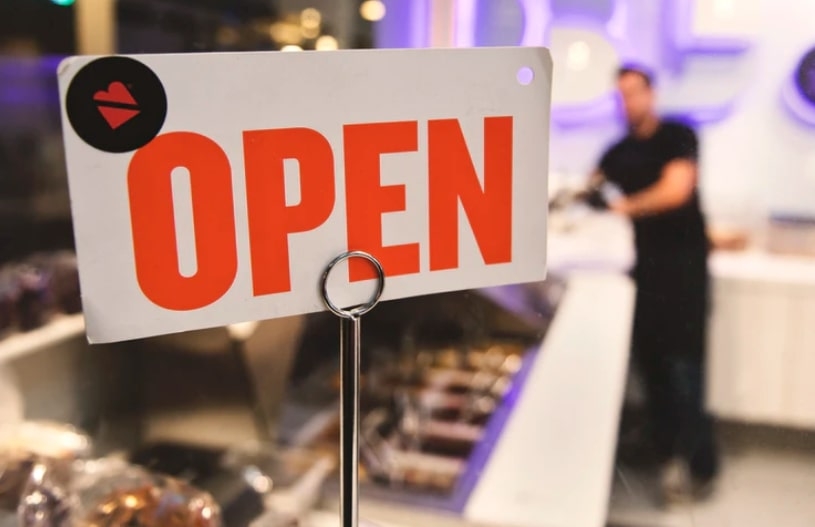
As client-facing businesses around the world are preparing to re-open, they will be faced with new difficult challenges they have never experienced before. They will need to adopt unprecedented regulations that prioritize public safety above all else.
For gyms especially, new public health regulations are likely to impact every aspect of their businesses.
The harsh reality is, when gyms and fitness facilities are permitted to open, they will have more responsibilities and pressure than ever before.
Most gyms are under immense financial pressure after their losses incurred by this period of forced closures, which may have forced staff and budget downsizing. They will also be stressed by new policies requiring extreme new hygiene measures and capacity restrictions.
No one can predict what exact social distancing measures will be at gyms, how long they will be enforced, or if they may return in months from now. By establishing strong operational systems to regulate member flows now, gyms will safeguard their operations in the future.
Luckily, most gyms are already equipped with basic tools already in your management systems that can be repurposed to help you adjust to these new capacity parameters.
Gyms must act now to create clear and actionable procedures for when they reopen their doors.
This article will discuss:
- New Hygienic Procedures
- Communication Strategies with Members
- Capacity Management Strategies
- How Software Solutions Can Support Your New Policies
Keep It Clean

Before you can create any operational policies for your gym to reopen, you are responsible for creating the safest environment possible to your staff and members. Your gym will probably need to meet new local government imposed cleaning standards that can be measured by metrics.
Your cleaning policies must be thorough, meticulous, and accounted for. You must enforce a clear cleaning schedule that is never compromised: if you are not overdoing it, you probably aren’t doing enough.
Every part of your gym, from equipment to reception desks, must be sanitized on a strict schedule even if it has not been used.
You also need to show your members your commitment to their personal health to make them comfortable returning to your gym. Therefore, you will need to create strict guidelines for your staff, cleaning crew, and members to follow
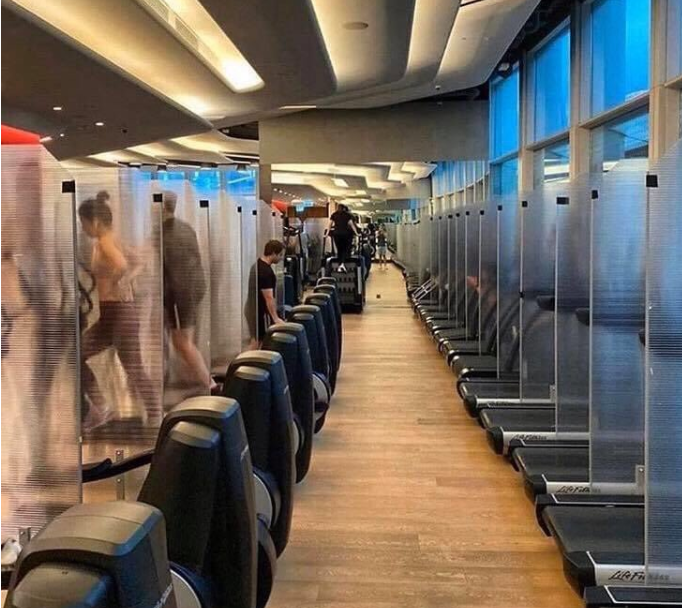
For the time being, you may also want to consider additional layers of hygenic security for social distancing requirements.
In addition to space utilization for distance between machines, you may also want to consider temporary plastic barriers to be placed around machines that can be easily sanitized.
To read about specific gym cleanliness procedures for your gym, click here!
Clear Communication with Members
Your messages to members should be more than letting them know that your gym is back in business!
As your gym begins establishing its new policies for hygiene and capacity, you must keep your members informed every step of the way. This will include informing them of:
- How and when they can access your gym
- What actions your gym is taking to follow government guidelines
- How you are prioritizing your members’ safety
- What your members are personally accountable for
The consistent communication you established with your clients during lockdown should remain at this hyper level.
You will need to use your omnichannel communication platform to give your members frequent updates about your club and their personal visits. This means sending correspondence regularly through email, sms, and mobile app if applicable.
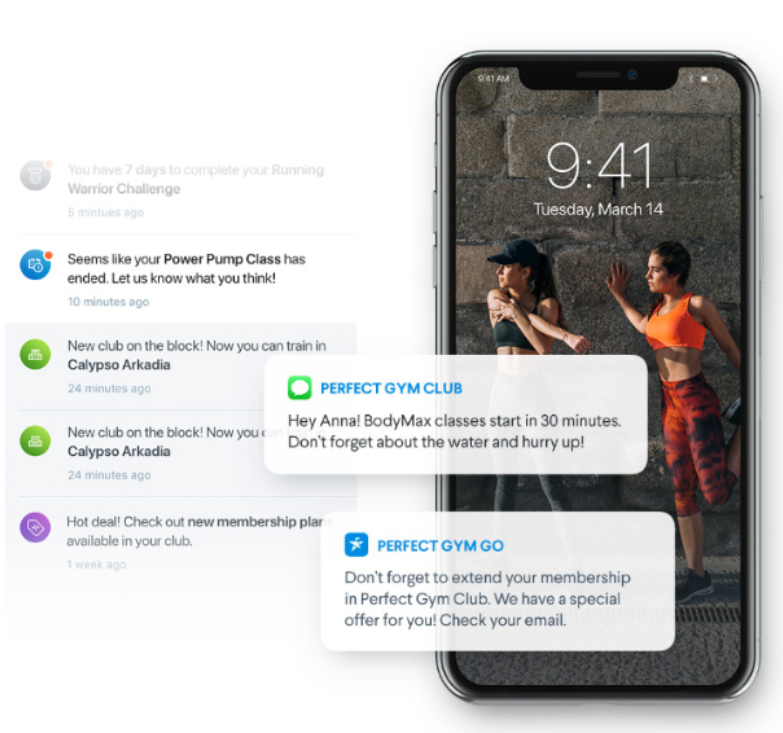
In this extreme case, do not be scared of burdening clients with your frequent use of mass communications. Your clients will likely be apprehensive about returning to the gym in the first place.
Keeping them informed about all your club’s new systems and guidelines in place will show that you value their health and safety above all else.
Much of this correspondence on a club and individual member can be automated. At a minimum, plan to send weekly newsletters about your club’s status and member access terms.
If your club plans to permit attendance by pre-booking, make sure to set automated confirmation and reminder notifications to keep your client informed.
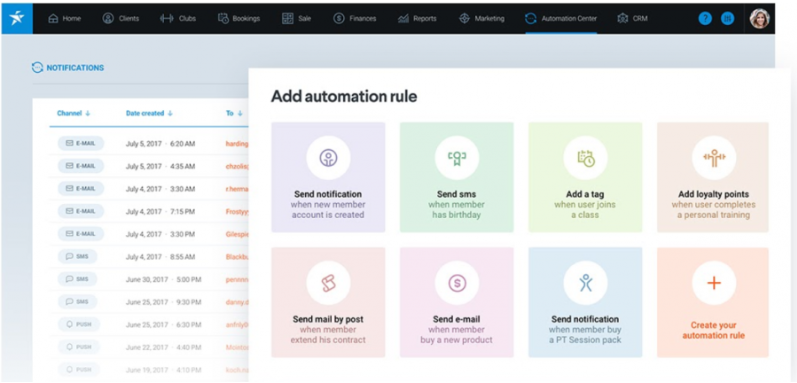
You must make your members aware of their new firm expectations for their personal hygiene. Before members return, consider having them sign agreements to uphold these new personal measures, like frequent handwashing, cleaning machines, or new locker room conduct.
Similar to hygenic measures, spacing for social distance will be extremely important. Gyms have already reorganized their floor plans to maximize several meters between machines. A basic rule of thumb for cardio equipment can be one user per every three treadmills, spin bikes, stairmasters, etc.
System to Monitor Capacity and Set Limits
Gyms need clear and concise plans for their capacity management. For the foreseeable future, members will not be allowed to openly attend whenever they please.
Group classes will have very strict limitations according to room sizes in addition to capacity within your overall gym.
You will have to place strict limits on the number of people (staff and members) allowed in your facility at a time. You will also need a clear system that ensures that capacity is never exceeded.
Capacity Management can be achieved through several strategies:
- Manual Check-in and Check-out
- Pre-booked Appointments
- Access Control Restrictions
Manual (Front Desk) Capacity Strategies
Many gyms will prefer to control member capacity by staff manually. This method means that your front desk staff will be responsible for overseeing checking clients in and out to make sure your club never exceeds the maximum visitors.
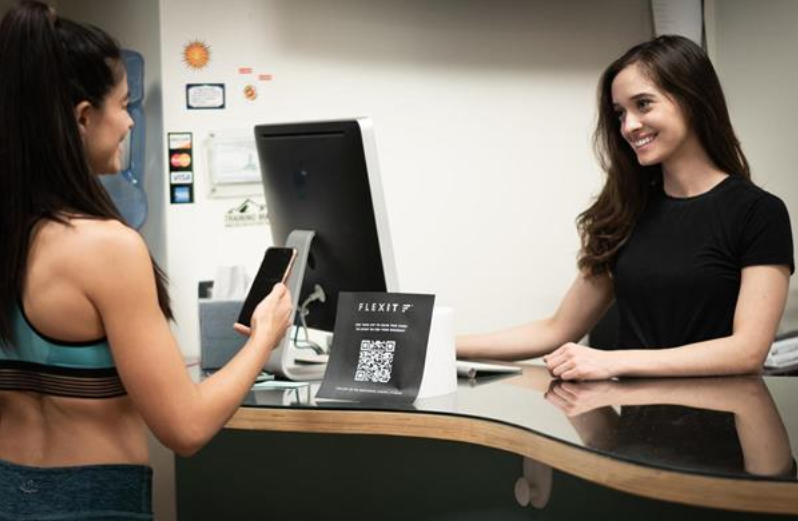
This method is best for smaller or high contact gyms who are already familiar with front-desk check-ins compared to automated access controls. It will not require any immediate management system reconfiguration, but will inevitably require great care and attention from your staff.
This system will also require that your members also follow a checking out procedure, which oftentimes can be overlooked when they leave freely after their workout is completed.
However, there are several ways that your gym software and hardware solutions can assist in this process, even if staff are manually in charge of these processes. First, you can lower your club’s capacity maximum in your management system.
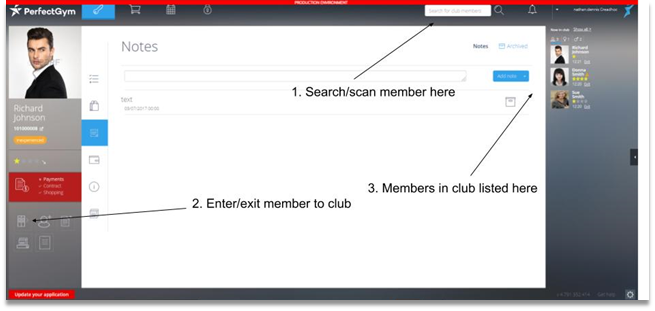
When guests check-in and check-out with access devices (cards, keys, etc), the members will be tracked relative to the capacity.
Once capacity is reached, the system will block further access to the club. Members who come once capacity can be added to a waitlist before a spot has opened for entry.
With proper management tools, staff who are responsible for overseeing these check-in and check our processes will be able to check a live dashboard metric of members currently in the club/capacity for more members.
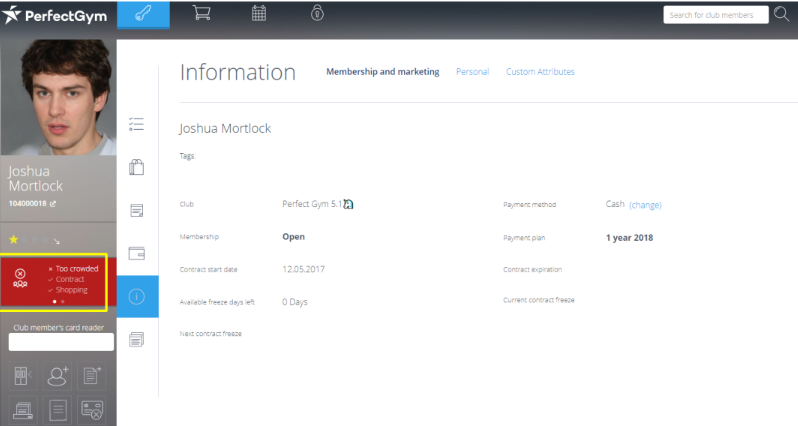
Every time a member checks in and out using their access device, your system will catalog how long they stayed at your facility. Using reports, you can run analyses on the typical time that members stay. You can use this data to plan the flow of your members throughout the day.
You can also use this data to provide guests with informed estimates for waitlists to enter the club. However, waitlists have the clear drawback that you will not be able to easily notify your members regarding when they can enter the club.
Ad-Hoc Visits with Mobile App Data
If your club has a mobile app, some clubs have configured ways to provide live updates regarding club availability. By using the live data provided in the app, users can plan visits by viewing their club’s availability first.
As seen below with PerfectGym’s mobile app, a new dashboard provides a live update of members currently in the club:

This basic information can help avoid waitlists or help members have reasonable expectations for club entry. This also will eliminate members from constantly calling clubs to ask about capacity before making the trip to the gym.
Pre-Booking Capacity Management
Another capacity management strategy is to have your clients pre-book, or reserve time slots to attend your gym as they would for a class. To do so, your club will need to have an online system for members to book classes either through client portals or a mobile application.
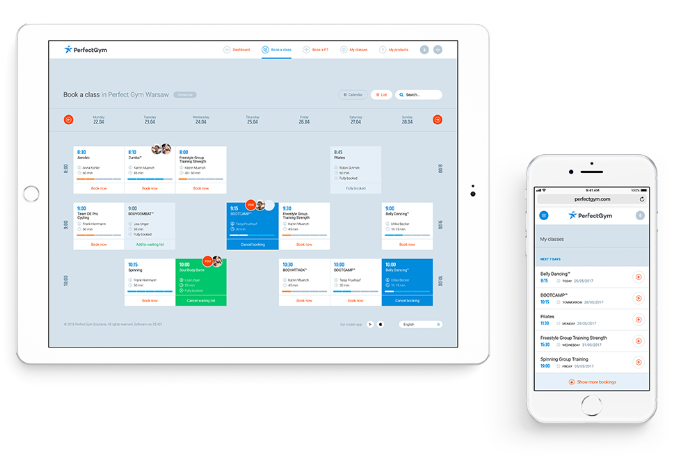
This strategy is great because it will provide a comprehensive structure to follow. Your members can plan ahead of time and your staff will aided by management tools to control the entry and exit of clients.
Pre-booked appointments also have the advantage of giving members clear exit times instead of allowing them to leave at their own discretion.
On the management side, gym staff will benefit from knowing ahead of time how many members to expect. This knowledge could be used to assess if last minute walk-ins could be permitted access as well.
This also means your staff will not be responsible for hurrying members out to allow in new ones. This small requirement can be a key difference maker in overall regulating the flow of your clients.
You can reconfigure your online class booking system to apply to your club as a whole. Your members can essentially book an appointment to visit your gym ahead of time and then be held accountable to leave when their time slot is completed.
This can be done by creating a club timetable instead of just your class schedule. Clients can then book entry slots as needed with reception overseeing the process or making adjustments.
Just like checking in for a class, members will check in either manually or systematically at the front-desk before entering the club.
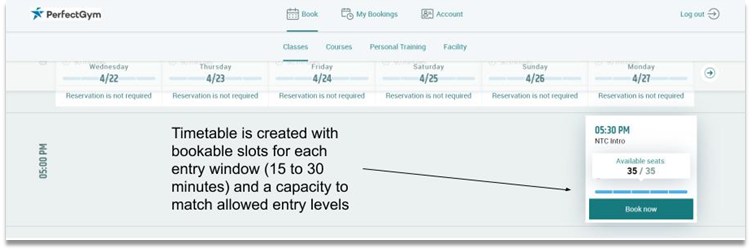
With pre-booking gym visits, members can either check-in independently or manually depending on your system controls. Large gyms that rely on self-service will benefit most from reconfiguring access rules to be based on appointments.
Data analyses can also be important here to gauge what the average time spent at the club per member. You can design timeslots with different time availabilities, (30 minutes, 45 minutes, an hour, etc).
When creating schedules, gyms should be mindful of creating periods designated strictly for cleaning between appointments. This period will both make members feel more comfortable before entering your gym, but will show the extent your gym is going to protect your members.
Access Control Management
If your gym relies on self-service check-in procedures through an access control platform, you will have more tools at your disposal to regulate capacity.
These access control systems can be your first line of defense in capacity management, only allowing in guests who meet your new requirements without relying as much on staff.

Access control platforms provide for granular control of member entry, which can be based on specific memberships, club zones, time of day, or booking entries.
If your club decides to use a pre-booking system, your access control platform can be programmed to only allow visitors from guests who have signed up for these specific time slots.
Another common option gyms can use with their access control platforms is to change membership policies to only permit that member to enter your club at certain times/days.
Based on availability, your members can opt for memberships in peak or non-peak hours and on particular days, which can then be priced accordingly.
For example, memberships that permit entry from 9-10AM should be priced lower than memberships between 6-7PM.
Then, once member accounts are updated with new membership details, access control permissions will only grant members during their allotted times, guaranteeing your club does not exceed maximums.
To create different membership options based on times of entry, you can assess client patterns to find typical peak and low times as well as average duration.
These data points can help you set up time parameters so your members will still feel like they were allotted enough time to have a proper workout.
Incorporate Temperature Checks
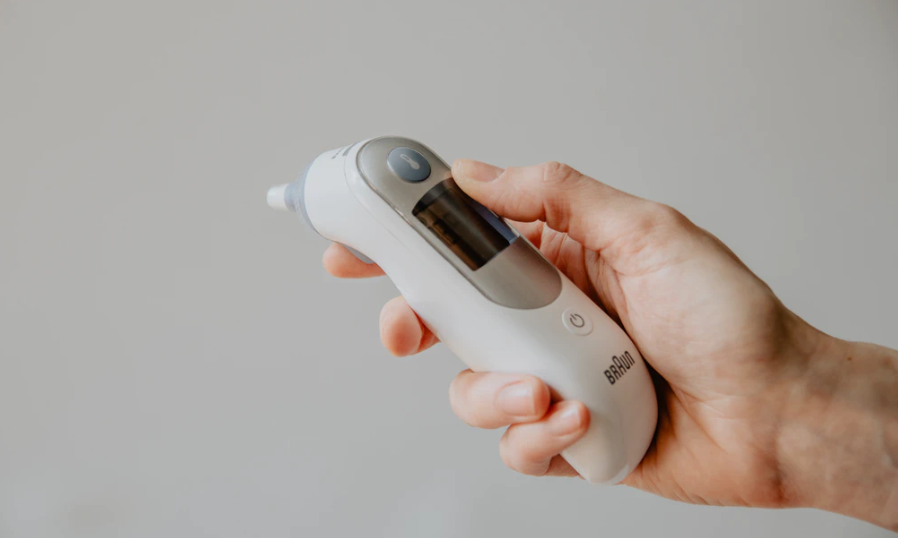
Like many other public places, temperature checks are a great first line of defense for controlling spread. The most popular devices take temperature instantly and without any personal contact.
Not only is this measure great for keeping your gym safe, but your members and staff will also have peace of mind.
Closing Thoughts
Without question, gym reopenings are going to be extremely difficult. In this uncertain time, you will need to do everything possible to help your staff and members adjust this temporary “new normal”.
As your gym adopts new guidelines and harsh post-COVID circumstances, your operations will need more hands-on attention than ever before. However, instituting firm procedures and capacity management systems will be the true difference maker during this stressful process.
Establish strict cleaning schedules and hold all staff and members accountable. Prepare to have a clear system that will help you control capacity, but of course use flexibility to adjust these procedures as needed to best suit your unique club needs.
Relying on your staff is simply not enough: use your management tools innovatively to aid this process however possible.
Your staff will feel supported by a solid technical foundation to uphold your gym’s new policies. Most importantly, your members will feel comforted by your commitment to prioritizing their health and safety above all.